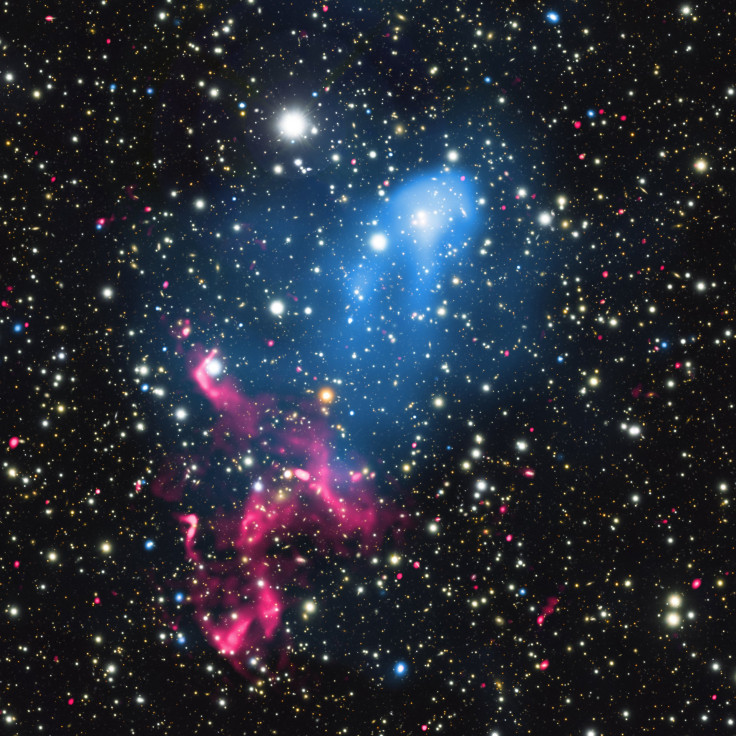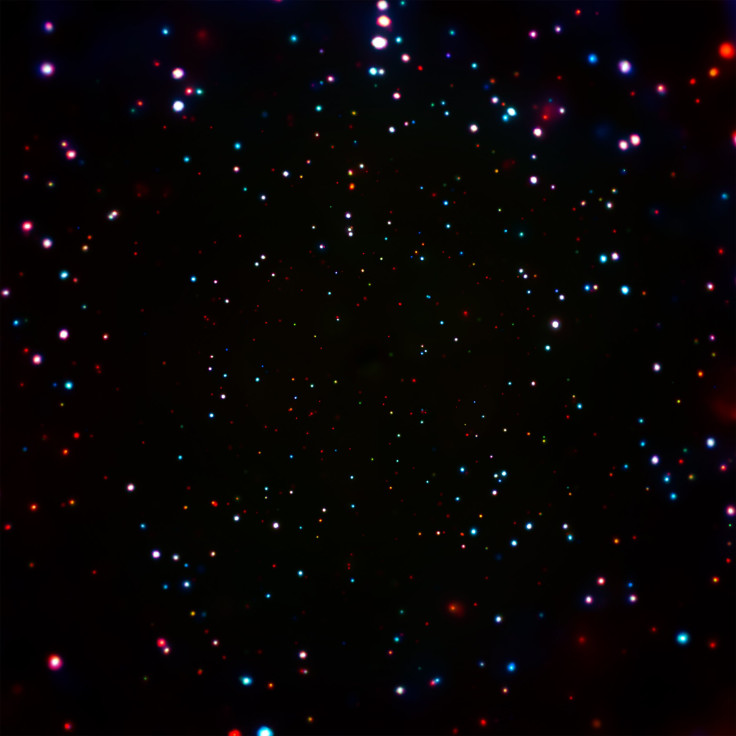Thousands Of Supermassive Black Holes, Galactic Particle Accelerator: NASA’s Chandra X-ray Observatory Finds Treasure Trove Of Astronomical Data

2017 has made a promising start for astronomers. At the ongoing 229th meeting of the American Astronomical Society in Grapevine, Texas, two exciting discoveries involving NASA’s Chandra X-ray Observatory were announced Thursday.
One discovery was presented as a breathtaking image of thousands of black holes, made using data collected over 7 million seconds, or about eleven and a half weeks, of Chandra observations. Representing an area called Chandra Deep Field-South, the deepest X-ray image ever shows the highest concentration of supermassive black holes ever seen. Using the same density, from our perspective on Earth, an area the size of the full moon would have about 5,000 of them, and the entire sky would have about one billion supermassive black holes.
Many of the black holes seen in the image date back billions of years, their formation traced to soon after the Big Bang. Using data from the image, researchers found that these black holes grew in bursts, rather than by slowly accumulating matter, about one to two billion years after the Big Bang.

Astronomers studying the data also theorize that the seeds for these supermassive black holes had masses of about 10,000 to 100,000 times the sun, which could explain how these objects grew so quickly in the early universe to reach masses of up to a billion times the sun.
“With this one amazing picture, we can explore the earliest days of black holes in the Universe and see how they change over billions of years,” Niel Brandt of Pennsylvania State University in University Park, Pennsylvania, who led a team of astronomers studying the deep image, said in a statement.
A survey paper on the Chandra Deep Field-South will be published in the Astrophysical Journal Supplement Series.
The other interesting discovery announced Thursday was that of the first observed instance of a supermassive black hole eruption being swept up into the collision of two galaxy clusters. Using observations from Chandra and a number of other telescopes from around the world, it was found that the phenomenon led to the creation of a galactic particle accelerator, which could explain previously inexplicable swirling structures seen in radio data.
Individually, both supermassive black holes and colliding galaxy clusters are among the most powerful phenomena in the universe, but they had never been observed clearly linked together.
The galaxy clusters, called Abell 3411 and Abell 3412, are about two billion light-years from Earth, and are very massive, with about a quadrillion (a million billion) times the mass of the sun each. A supermassive black hole within one of the clusters produced a magnetic funnel that accelerated some of the inflowing gas particles away from the black hole’s vicinity in the form of a high-speed jet. When the particle in the jet encountered the gigantic shockwaves produced by the collision of the two clusters, they were accelerated again.
“It’s almost like launching a rocket into low-Earth orbit and then getting shot out of the Solar System by a second rocket blast. These particles are among the most energetic particles observed in the Universe, thanks to the double injection of energy,” Felipe Andrade-Santos of the Harvard-Smithsonian Center for Astrophysics (CfA) in Cambridge, Massachusetts, and co-author of a paper in Nature Astronomy, said in a statement.
© Copyright IBTimes 2025. All rights reserved.





















